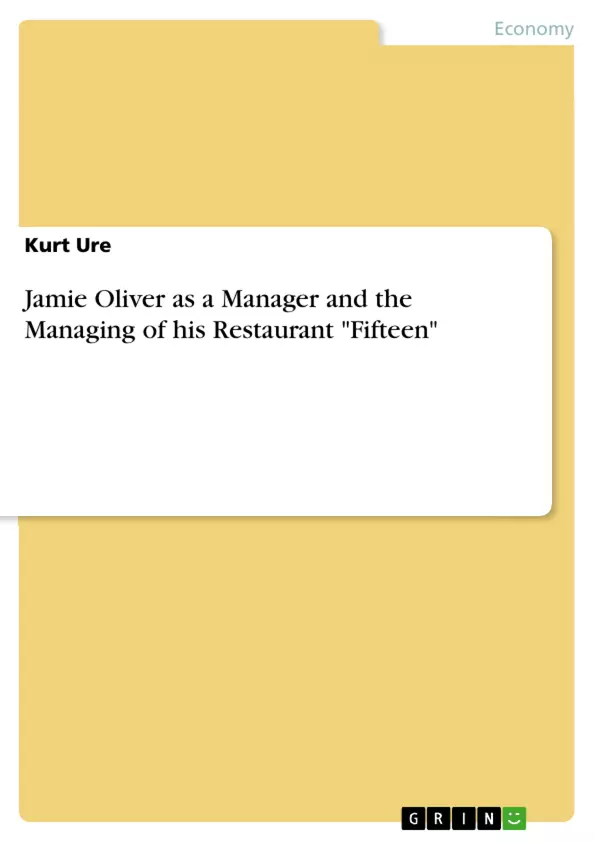Undergoing the project fifteen Jamie Oliver has had to assume multiple roles in creating and managing not only the organisation but also the staff he employs. Jamie Oliver would have worked with many applicants and then finally settling with his final fifteen. Jamie Oliver will have assumed interpersonal roles, informational roles and also decisional roles.
In terms of interpersonal roles Jamie Oliver has played the leader, the leader role is largely important and focuses on maintaining staff, motivating them and also guiding them. Jamie Oliver has shown leadership qualities when he took his group of fifteen out on a field trip to local suppliers, this shows that he has provided the group with motivation as he is providing them with a hands on experience where all
members of the group can take part and gain valuable knowledge. Jamie Oliver has also shown positive hands on leadership skills due to his emphasis he puts in to rewarding staff that put in the extra effort, this therefore promotes motivation further within the group and shows he is providing positive guidance.
Inhaltsverzeichnis (Table of Contents)
- Managing 'Fifteen'
- Interpersonal Roles
- Leader
- Liaison
- Informational Roles
- Monitor
- Disseminator
- Decisional Roles
- Disturbance Handler
- Entrepreneur
Zielsetzung und Themenschwerpunkte (Objectives and Key Themes)
This text analyzes the managerial roles undertaken by Jamie Oliver in his television show "Fifteen," drawing upon Mintzberg's classification of 10 managerial roles. The text explores how Oliver fulfilled these roles in various situations within the show's context.
- Interpersonal Roles of a Leader
- Informational Roles of a Monitor and Disseminator
- Decisional Roles of a Disturbance Handler and Entrepreneur
- The Importance of Effective Management for Organizational Success
Zusammenfassung der Kapitel (Chapter Summaries)
- Managing 'Fifteen': This chapter introduces the concept of managerial roles as defined by Mintzberg and how Jamie Oliver exemplifies them in the "Fifteen" project. The chapter explores how Oliver's leadership, liaison, monitoring, disseminating, disturbance handling, and entrepreneurial abilities contribute to the success of the program.
- Interpersonal Roles: This section examines Oliver's interpersonal roles as a leader and a liaison. It analyzes how he motivated and guided his team, built relationships with suppliers, and addressed conflicts among staff members.
- Informational Roles: This section focuses on Oliver's roles as a monitor and disseminator. It investigates how he gathers and uses information to make decisions, such as selecting participants for the program, and how he shares knowledge and skills with his team.
- Decisional Roles: This section examines Oliver's roles as a disturbance handler and entrepreneur. It explores how he responds to unforeseen events and makes proactive decisions to solve problems and ensure the project's continuity.
Schlüsselwörter (Keywords)
The text focuses on key concepts such as managerial roles, leadership, motivation, information sharing, decision-making, and problem-solving. It also examines the importance of effective management in achieving organizational goals.
- Quote paper
- Kurt Ure (Author), 2013, Jamie Oliver as a Manager and the Managing of his Restaurant "Fifteen", Munich, GRIN Verlag, https://www.grin.com/document/284041



